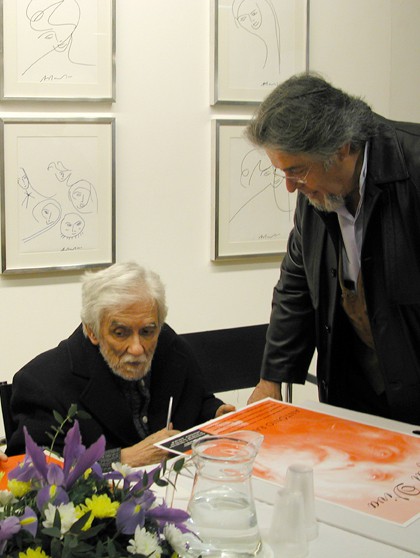
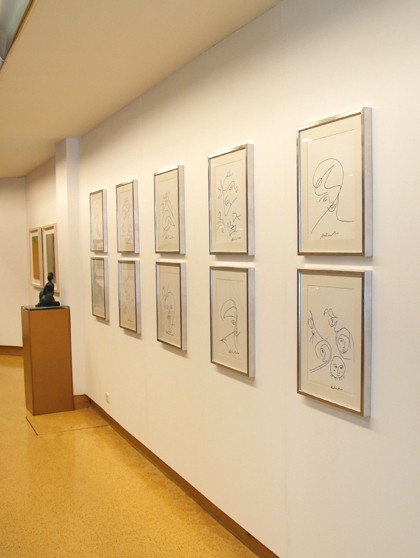
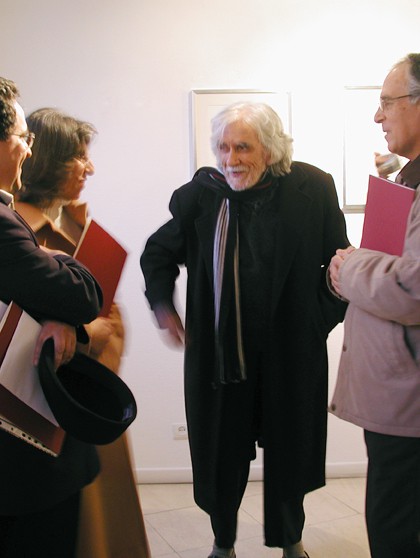
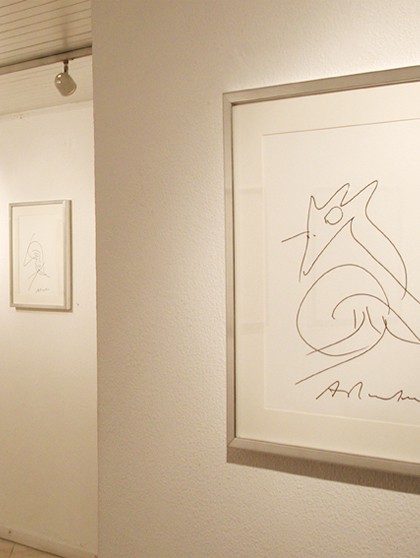
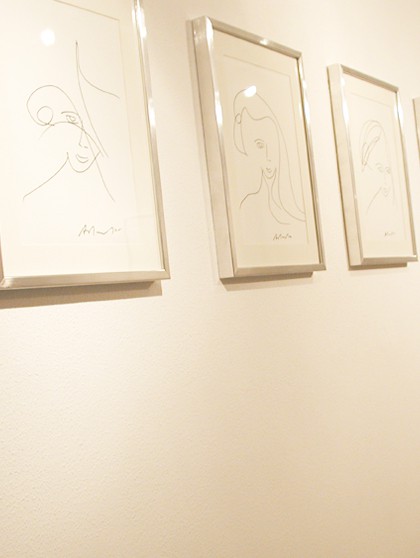
Vogal Viva, Art Album
Celebrating its twenty years and the eighty years of António Ramos Rosa, the Portuguese Screen Printing Center (Rua dos Industriais, nº6, 1200 Lisbon) published an album of poetry and new drawings of the poet who has already He was a candidate for the Nobel Prize, with the title Vogal Viva, inspired by one of his verses. The album launch will be held at the Centro Português de Seriografia facilities (Rua dos Industriais, 6, 1249-023 Lisboa), Saturday, April 2nd, at 4pm, with the presence of the poet. The presentation will be kept at a later date. by Maria João Fernandes, author of the preface and the reading of the poems by Alexandra Bernardo. In this album, whose production coincided with an exhibition of the poet's drawings at Galeria S. Bento, drawings and love poems identify the splendor of a multifashionable expression under the sign of woman and love that brings together word and image in the same creative breath, a link to an essential mystery. The graphics and two sublime photographs of the poet were created by João Prates, director of the Portuguese Screen Printing Centre, in whose workshops the album was created with the greatest refinement and care. The manual artistic binding was designed in two versions, for the normal edition and for the special edition, by Vasco Antunes. The normal edition in a circulation of 200 copies is available. accompanied by an engraving by António Ramos Rosa and the special edition, of 50 copies, by an original drawing. Maria João Fernandes writes in the preface: “É Foucault ("The Being of Language" Words and Things) for whom language is originally and even a result of to the 17th century, from a relationship of similarity with the world that tends to absorb the meaning of signs, "nevertheless preserving its "enigmatic and primitive" being", whoever recognizes in the link that modern literature renews with the unthinkable, the unknown, the "living being" of language, its specificity and autonomy. A whole host of illustrious poets practiced dialogue with painting, by William Blake , Dante-Gabriel Rossetti, William Morrris and Lewis Carroll to Victor Hugo and George Sand, to the French symbolists (especially Alfred Jarry) and Belgians in the years of the Revue Blanche. From the futurist experiments of Apollinaire (author of the Caligrams, the book is the most emblematic of the relationship between poetry and painting in the 20th century), Jean Cocteau and Blaise Cendrars, to the unique work of genius of Almada Negreiros and to the privileged "moment" of Surrealism where we see André Breton Other poets and exponents of modern European culture dedicated themselves to art. delicious contamination of languages, among which Rafael Alberti and Federico Garcia Lorca stand out in Spain and among us Teixeira de Pascoaes, José Régio, Julio-Saúl Dias, Mário Cesariny, Artur Cruzeiro Seixas, Ernesto Melo e Castro, Ana Hatherly and, precisely, in a consecration that the current tribute album documents, António Ramos Pink. With a brilliance and a beauty that dazzles us, from the magnificent whirlwind of words, from the tree of one. fruit, of paradise, to which the poet already belongs. referred to (Afterword to Cerejas Poems de Amor de Autores Portugueses Contemporaneos) we see the emergence with the purity of an archetype essential to its muse, image, living vowel of an anima that is; More than the woman who loves her poetry, the sublime metaphor of the Anima, sign and emblem of a total reality. The one that merges and where the body and spirit, matter and the original, divine breath of creation merge.” The woman is at the origin of two of his most significant books: Mediadoras (Ulmeiro, 1885) and O Teu Rosto (Asa, 2001), dedicated to the his wife, Agripina Costa Marques, is also a poet. This album, a masterpiece of art publishing, also corresponds to the This is the most beautiful celebration of love and the female figure, inspiration and foundation of all the poetry and drawings of António Ramos Rosa, in a splendid dialogue between word and image.